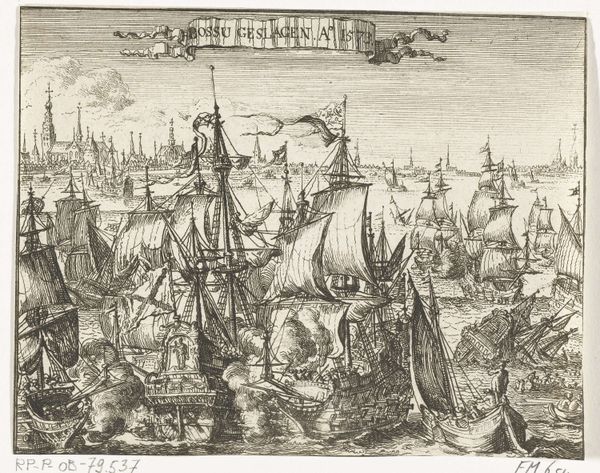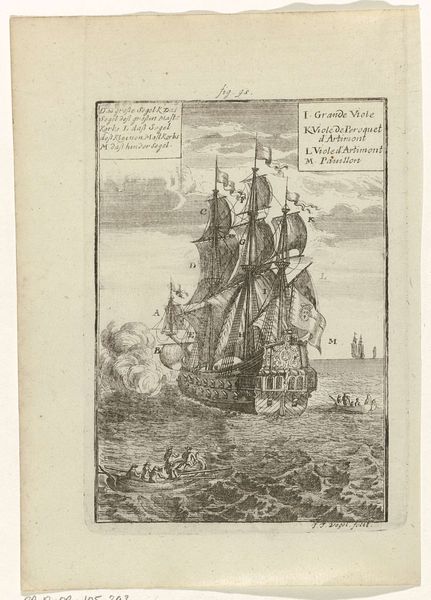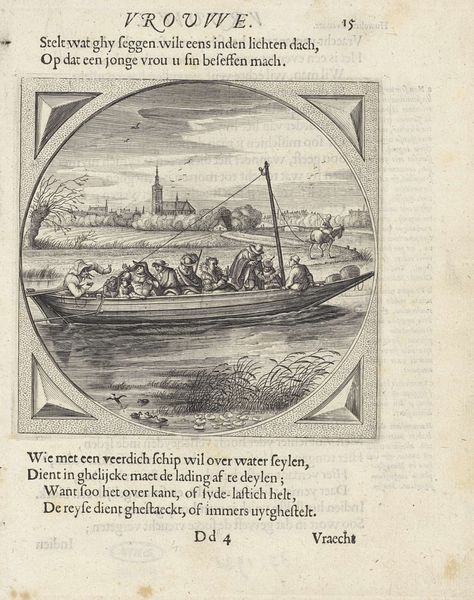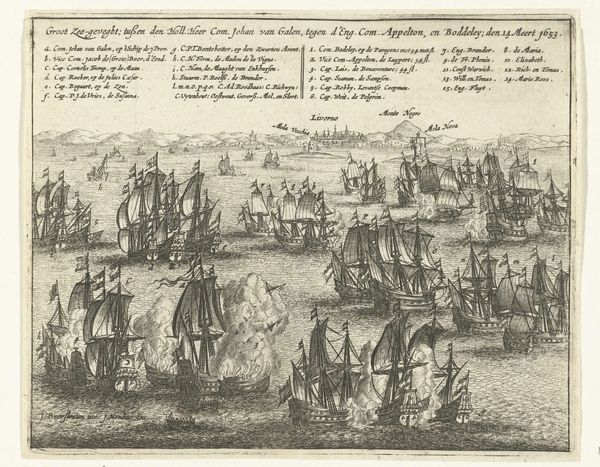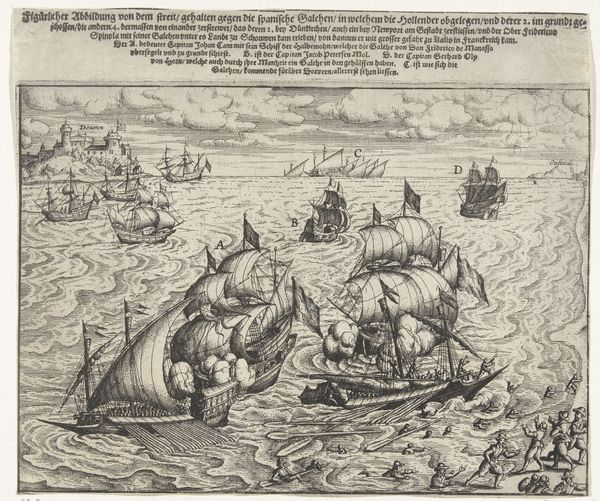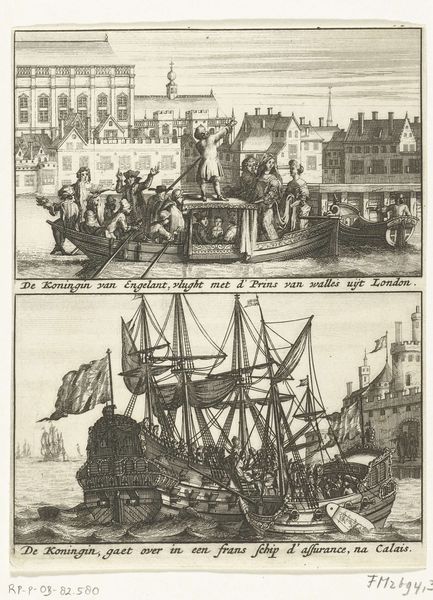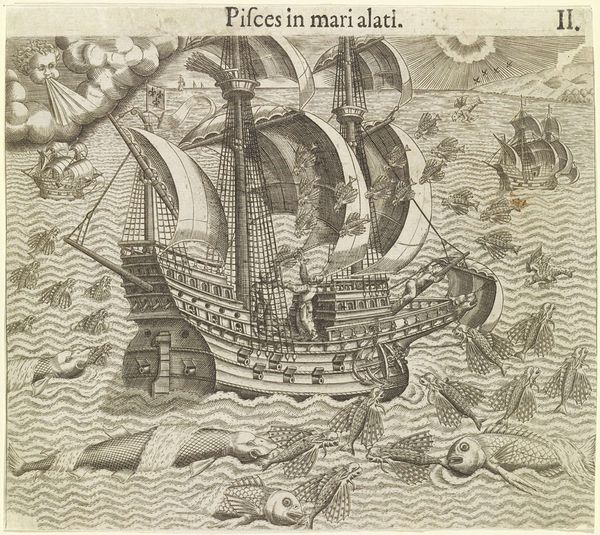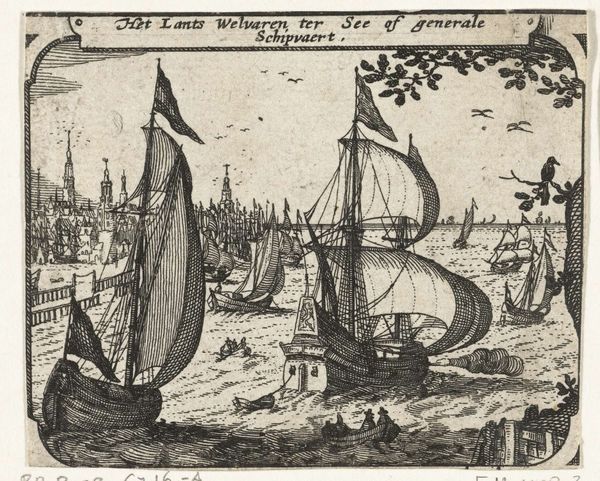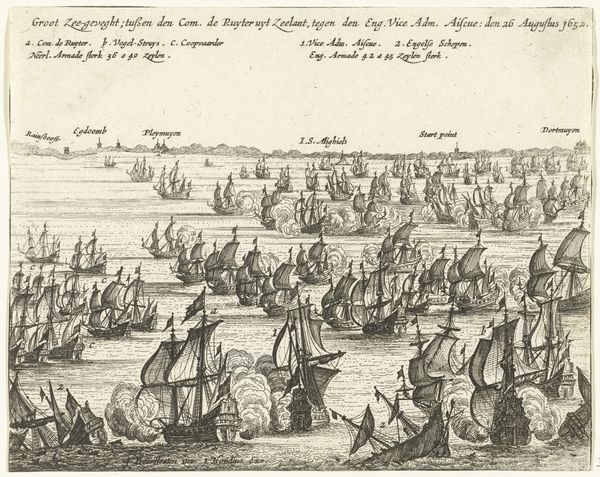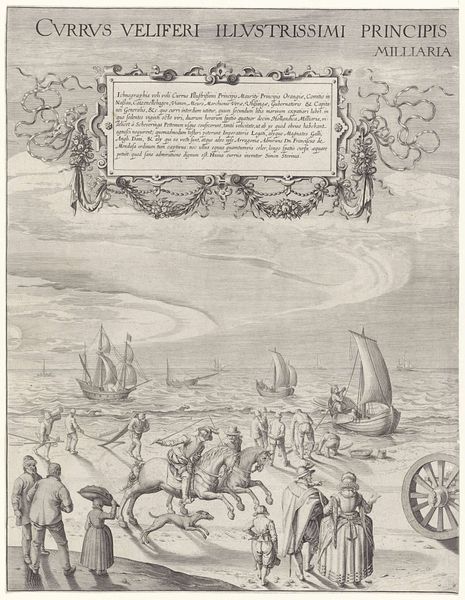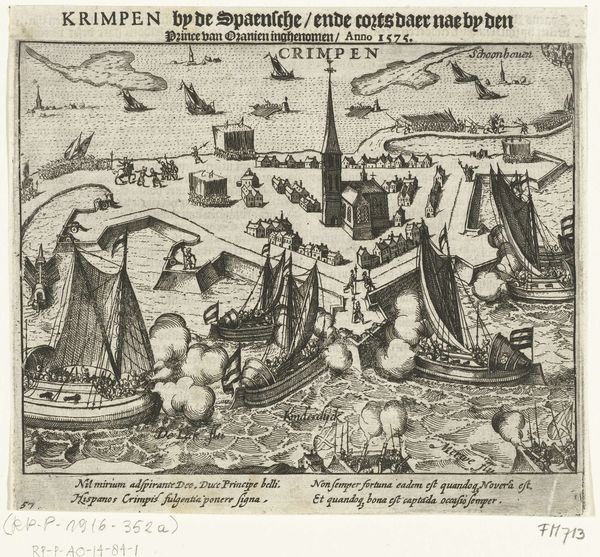
print, engraving
#
dutch-golden-age
# print
#
landscape
#
cityscape
#
history-painting
#
engraving
Dimensions: height 62 mm, width 64 mm, height 132 mm, width 68 mm
Copyright: Rijks Museum: Open Domain
Curator: This print, residing here at the Rijksmuseum, depicts the "Fleet of Floris V of Holland," dating back to 1658 and made by Hendrik Jacobsz Soeteboom. Editor: Immediately I notice the scale! It’s so compact. All this activity—the boats, the suggestion of a distant city—pressed into a small rectangle. What material did Soeteboom use for this? Curator: This is an engraving. I find it intriguing how an engraving manages to convey so much information, particularly about the tools used in war or city-building in the Dutch Golden Age. There's a certain precision to the etching that lends itself well to illustrating the complexities of material culture at the time, like the boats, the weapons, the cities' design. It also is an explicit history painting. Editor: Yes, I see what you mean. The subject is resolutely of its time—late 17th-century Dutch society’s naval interests and its self-image cast against its medieval foundations. The ships themselves seem quite meticulously rendered. And yet there is something so strange, isn't it, about seeing medieval boats rendered in 1658! How Soeteboom managed that, in terms of historical documents. Did he base it on accounts or manuscripts, and who commissioned this engraving and why? Was it part of a larger series? It almost feels anachronistic in its devotion to past events through printmaking, right? Curator: Exactly. He gives you details about both war machinery and how labor contributed to shaping this city—and it also presents a very precise vision of a key historic event from the middle ages! One wonders what Dutch people thought of all this. It's really more a city view that represents its war fleet that allowed its prosperity in the Dutch Golden Age. But the question of who owned such art pieces also offers a way into studying the dynamics of ownership and use of historical paintings! Editor: A fascinating blend of national pride and historical curiosity all tied into a small piece of printed paper. It really compresses all that complex thinking and materiality into a single small historical work! Curator: Absolutely. And to see the social, economic, and cultural tides all collected and manifested so skillfully!
Comments
No comments
Be the first to comment and join the conversation on the ultimate creative platform.
